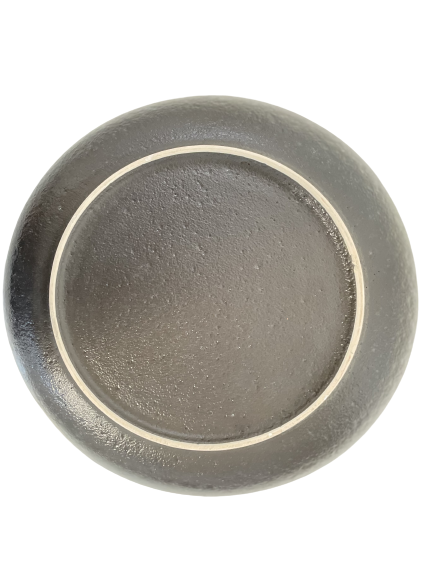One of the biggest doubts surrounding ceramics is about its waterproofing ability. Are ceramics waterproof or not?
When it comes to this particular question there are too many variables to be considered.
First of all, each type of clay, earthenware, stoneware, porcelain and terracotta, has its own particularities. In our case, we use earthenware, and in the form of a raw material and as a low fire clay, we can say that earthenware is not waterproof. Because of its porous propriety, this type of clay absorbs the water and causes a leakage, even after the first firing – in the biscuit phase.
So how come it is possible to use ceramic vases, or to drink from a ceramic cup or even to wash the dishes?
As previously said, even after the first firing, at the biscuit phase, the earthenware is still not waterproof, since during this firing the piece loses its plasticity, but not the inherent porosity. The biscuit possess imperceptible pores thar are responsible for the water absorption and consequent leakage of the liquid and for the undermining of the ceramic body.
However, the piece is yet to be finished – there is still the glaze firing. Besides giving colour and personality to a piece, a glaze also creates a vitreous layer that covers the entire surface of the piece and that may waterproof it during the second firing. You are probably wondering why may?
Foot Rim
During the second fire, the glaze fuses with the ceramic body. Therewith, the bottom of the piece must be cleaned and glaze free, in order to avoid the piece from being glued to the wagon, creating an unglazed area, called foot rim. This unglazed rim is nothing else other than biscuit. As such, this area keeps its weaknesses and water absorption, and should never be in contact with water.

Special glazes
When working with regular glazes we know what to expect from them, we know they allow a complete and uniform coverage of the piece and that these glazes stable during the firing process. However, with special glazes the situation isn’t quite that simple.
Specials glazes – reactive, crackles and others – are unpredictable. They create unexpected reaction while firing, which may open pores in the glaze, leaving the piece once again exposed and weaker, increasing the likelihood of water absorption.
As you can see there are several variables to be considered.
So, when is ceramic, particularly earthenware, waterproof?
An earthenware ceramic piece can be waterproof when glazed with a regular glaze or when this type of glaze is applied to the interior of the piece, for example, using a regular glaze in the inner part of the piece, while using a special glaze in the exterior to decorate (HOWEVER, SOME GLAZES CAN NOT BE MIXED).
Watch this experience, carried in the factory, where we put water in two different ceramic pieces. One is still in the biscuit phase, without glaze, and the other is finished and has a regular glazed applied to its interior.
In this experience you can observe that in the first piece, still in the biscuit phase, the water is absorbed, while in the second piece the same doesn’t happen, the piece is water resistant.
Lastly, there is always the possibility of applying a water repellent to the finished piece, this will seal all the imperceptible pores in the glaze, repelling the water or any other liquid when in contact with the item.
Every piece is unique and so we strongly advise you to always read the instructions given.
